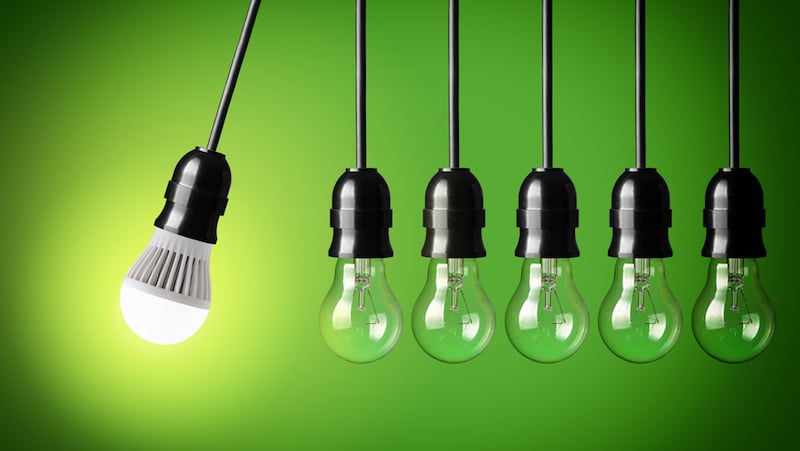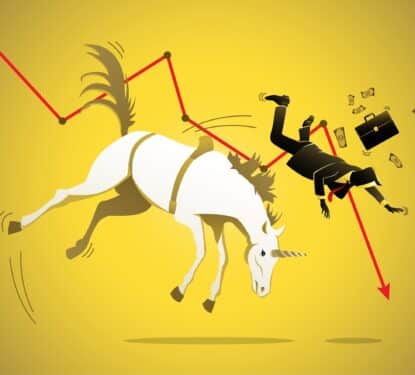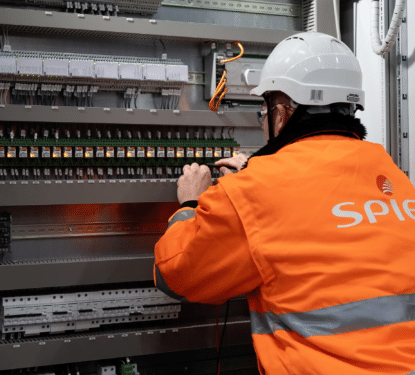Since electrical lighting was invented some 130 years, the incandescent lighting bulb has evolved at a very slow rate. It is still the main source of light across the world, despite the fact that LEDs appeared on the scene in the early 1960's and now deliver a much lower energy consumption, longer life, smaller size and faster switching light.
However LEDs are now rapidly replacing other light sources and are expected to take a 75% share of the lighting market within the next 9 years. This is a remarkable achievement for lighting, but it does not stop there for its future is inextricably linked with bringing intelligence into buildings.

Memoori’s latest report on The Lighting Controls Business – 2015 to 2020 builds its analysis on the fact that LED Lighting and its control network could provide the platform for many of the Building Automation Services (BAS) that are installed in Smart Buildings.
The logic is simple, lighting is pervasive in most buildings. Combine this with the ability of solid-state lighting to convey data both through IP and eventually Li-Fi and for the sensors in the control systems to gather data; then there is a realisation that lighting control is in a strong position both technically and commercially to take the leading role in integrating most of the technical services in a building.
Add in the potential that the latent retrofit market might open up for lighting controls and it can be seen that there could be enormous opportunities for those able to understand the various market influences and how to exploit them.
Our analysis, encompassing Merger & Acquisition, Strategic Alliance and Investment in lighting shows that a number of companies have set out a business model to achieve this objective by moving into value added products and services and moving out of the commodity end of the business with low margins and ever falling prices. They have yet to prove the veracity of this strategy but there is no shortage of venture capitalist prepared to back them.
[contact-form-7 id="3204" title="memoori-newsletter"]
3 of the top lighting companies Philips, Osram and GE Lighting have all made very significant changes to their business models and surprisingly have come up with different solutions.
GE have just reorganized its lighting business from top to bottom and the conventional lighting group is no longer called GE Lighting. It looks like it might be being made ready for sale. It has moved its commercial and industrial LEDs into a broad new $1 billion “startup” energy services business called Current.
It is part of GE CEO Jeff Immelt's overarching 'industrial internet' strategy. Immelt has staked the future of the company on digitally connecting the tools and objects of the industrial world to create nothing less than what he calls “the next industrial era”. This goes well beyond developing the tools for the Building Internet of Things (BIoT) for GE's goal is to embed and connect sensors into everything it touches, whether it's jet engines, gas turbines, locomotives or light bulbs. Those networked sensors would allow customers to gather data that helps them run the assets more efficiently.
Osram divested their LED manufacturing business in September this year when they announced that it will be selling its 13.5% stake in Foshan Electrical and Lighting (Foshan Lighting) to a subsidiary of Guangdong Rising Assets Management (GRAM) for more than €350 million (US $392.51 million). The deal it sealed with GRAM’s subsidiary at a premium of 30% of Foshan Lighting’s current share price.
Philips have made the most dramatic change by selling their Lumileds business this year and have made it known that the general lighting business will be floated or disposed of soon. Our report shows that Philips over the last seven years has spent far more than any other player on acquiring lighting companies in order to build up scale for its LED products but they have obviously taken the view that they cannot get sufficient business from this and the open market to make a satisfactory return. Making this decision must have been a difficult one being the premier company in the world’s lighting market for many decades. They will invest the proceeds from their lighting business into their higher value add operations.
All the current suppliers in the Lighting Controls business will have to redefine their business models, "wait and see" is not an option, because lighting now has the capability to offer the most logical route to deliver the IoT in building and beyond.
For more in-depth information on the topics discussed in this article, refer to our reports - Smart Buildings: The Lighting Controls Business 2015 to 2020 and The Internet of Things in Smart Buildings 2014 to 2020.



